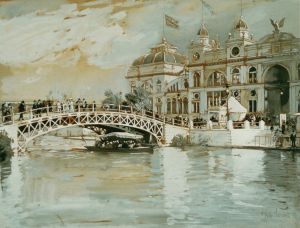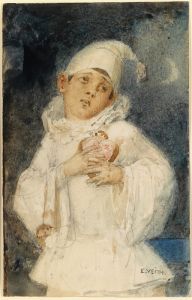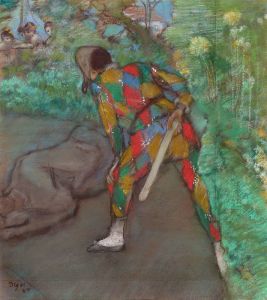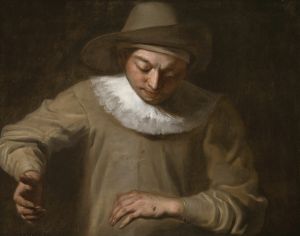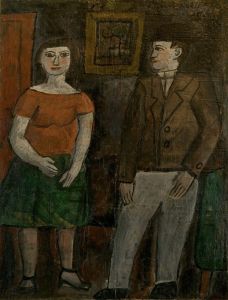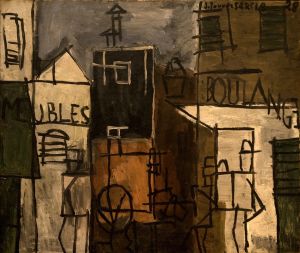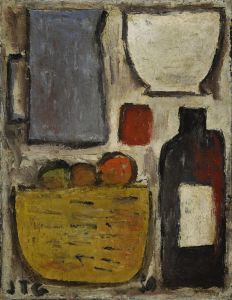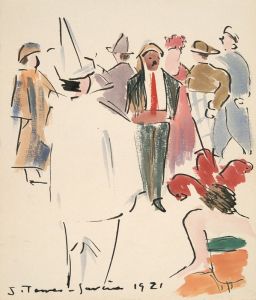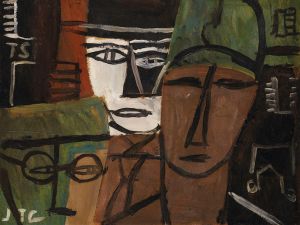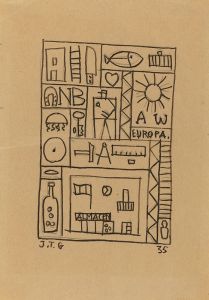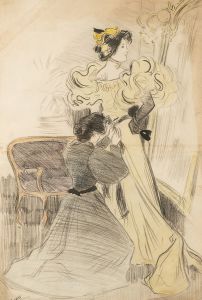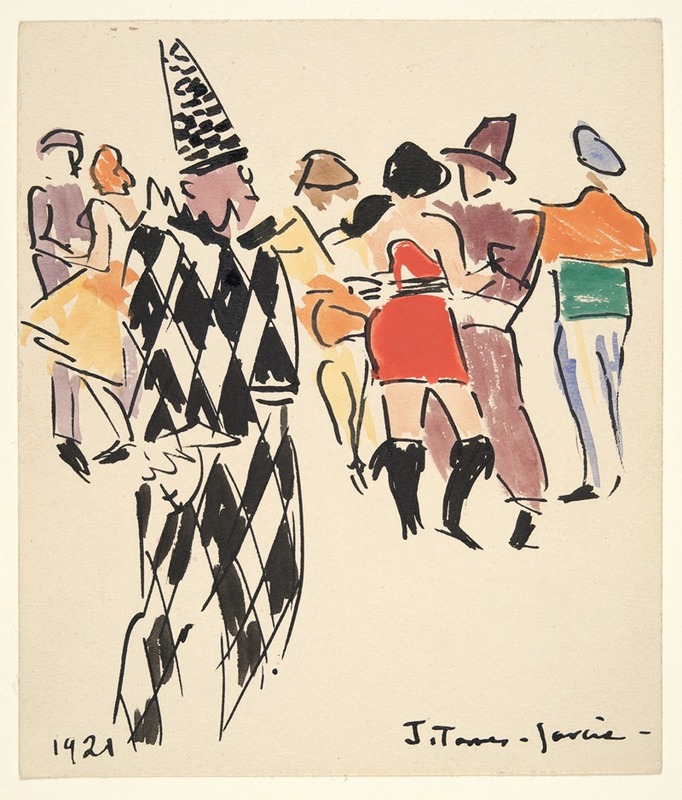
Artists’ Ball; Harlequin and Dancers
A hand-painted replica of Joaquín Torres-García’s masterpiece Artists’ Ball; Harlequin and Dancers, meticulously crafted by professional artists to capture the true essence of the original. Each piece is created with museum-quality canvas and rare mineral pigments, carefully painted by experienced artists with delicate brushstrokes and rich, layered colors to perfectly recreate the texture of the original artwork. Unlike machine-printed reproductions, this hand-painted version brings the painting to life, infused with the artist’s emotions and skill in every stroke. Whether for personal collection or home decoration, it instantly elevates the artistic atmosphere of any space.
"Artists’ Ball; Harlequin and Dancers" is a painting by the Uruguayan artist Joaquín Torres-García, a prominent figure in the early 20th-century art world. Torres-García is best known for his contributions to modern art and his role in developing the Constructivist movement in Latin America. This particular work, "Artists’ Ball; Harlequin and Dancers," reflects his engagement with themes of celebration and performance, which are recurrent in his oeuvre.
Joaquín Torres-García was born on July 28, 1874, in Montevideo, Uruguay. He spent a significant portion of his career in Europe, where he was influenced by various avant-garde movements. His time in Paris exposed him to Cubism, Surrealism, and other modernist trends, which informed his unique artistic style. Torres-García's work often incorporated elements of abstraction and symbolism, and he was known for his use of a grid structure, which became a hallmark of his Constructivist approach.
"Artists’ Ball; Harlequin and Dancers" is emblematic of Torres-García's interest in the interplay between structure and spontaneity. The painting features figures dressed as harlequins and dancers, a motif that has been popular in art for centuries, often symbolizing the theatrical and the whimsical. The harlequin, a character from the Italian commedia dell'arte, is typically depicted in a colorful, diamond-patterned costume, and is associated with playfulness and mischief. In this work, Torres-García captures the dynamic movement and vibrant energy of a festive gathering, possibly reflecting the lively artistic circles he was part of during his time in Europe.
The painting's composition is characterized by a rhythmic arrangement of forms and colors, demonstrating Torres-García's mastery of balancing order and chaos. His use of bold lines and geometric shapes is indicative of his Constructivist leanings, where the emphasis is placed on the construction of the artwork itself rather than its representational aspects. This approach aligns with his broader artistic philosophy, which sought to integrate art into everyday life and make it accessible to a wider audience.
Throughout his career, Torres-García was committed to creating a universal visual language that transcended cultural and geographical boundaries. He believed in the power of art to communicate fundamental human experiences and emotions. "Artists’ Ball; Harlequin and Dancers" can be seen as an expression of this belief, as it captures a moment of joy and communal celebration that resonates across different cultures.
In addition to his painting, Torres-García was also an influential teacher and writer. He founded the "Taller Torres-García" (Torres-García Workshop) in Montevideo, where he mentored a generation of artists and promoted his Constructivist ideals. His writings on art theory and practice further solidified his legacy as a pivotal figure in the development of modern art in Latin America.
"Artists’ Ball; Harlequin and Dancers" remains an important work within Torres-García's body of work, exemplifying his innovative approach to art-making and his enduring impact on the art world. The painting continues to be studied and appreciated for its artistic significance and its reflection of the vibrant cultural milieu in which Torres-García lived and worked.





